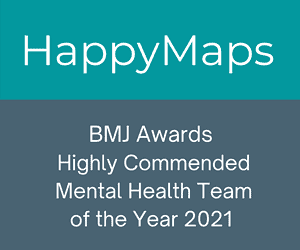Promoting a healthy and positive body image whilst children are at their most impressionable, will strengthen their self-esteem and may help them to have more confidence in later life. Some of the resources below discuss ways of helping children accept that everyone is different and learn about how images in the media are manipulated.
Talking less about how a child looks (even in a positive way e.g. “Don’t you look pretty?”) and more about something they do, shows children that there are many more important things than appearance. Parents and carers can also model trying to avoid saying negative things about their own appearance (“I’m so fat”, “I look dreadful”) or those of others. For those approaching puberty, you and they can read more on what’s normal on our page here.
Body Dysmorphic Disorder
In some severe cases, persistent poor body image may develop into body dysmorphic disorder (BDD) but this would be highly unusual at primary school age. BDD is when an individual becomes very distressed by a perceived ‘flaw’ in their appearance. Often their perception of these ‘flawed’ features is heavily exaggerated or imagined. When things like this happen, a child may feel ashamed of the way they look. BDD may begin to get in the way of normal life, for example not wanting to go to school.
Helping your child build a positive body image
Websites and Articles
- Body image | YoungMinds – what body image is, what influences body image, how body image affects mental health, body dysmorphia disorder, what to do if worried about body image, body positivity, supporting a friend with body image difficulties, how to get help
- Mind Over Mirror – Parenting for a healthy body image | Mental Health Foundation
- Developing & Modeling Positive Body Image | National Eating Disorders Association
- Helping your child build self-confidence and a positive body image One of several resources on the Dove self-esteem parent pages with some interesting facts about background research and advice on practical things you can do
- What happened to you?’ by James Catchpole Addressing how a disabled child may feel and want to be spoken to
- Positive Body Image for Kids: A Strengths-Based Curriculum for Children Aged 7-11 by Ruth MacConville (older primary – 7 to 11)
- Love Your Body by Jessica Sanders (Older primary – 8 to 11
- Self-esteem | PlantLoveGrow worksheets to help with self-esteem, self-love, self-acceptance, self-pride, gratitude, positive affirmations, self-respect, body acceptance
Podcasts
Resources for children
- Worried about how you look? Find out what’s normal especially as your body grows and changes, and get help if someone is bullying you or you are not sure who to talk to.
- Body image | YoungMinds – what body image is, what influences body image, what to do if you’re worried about body image, body positivity, supporting a friend with body image difficulties, how to get help
There are more links and videos on our secondary school body image page here



